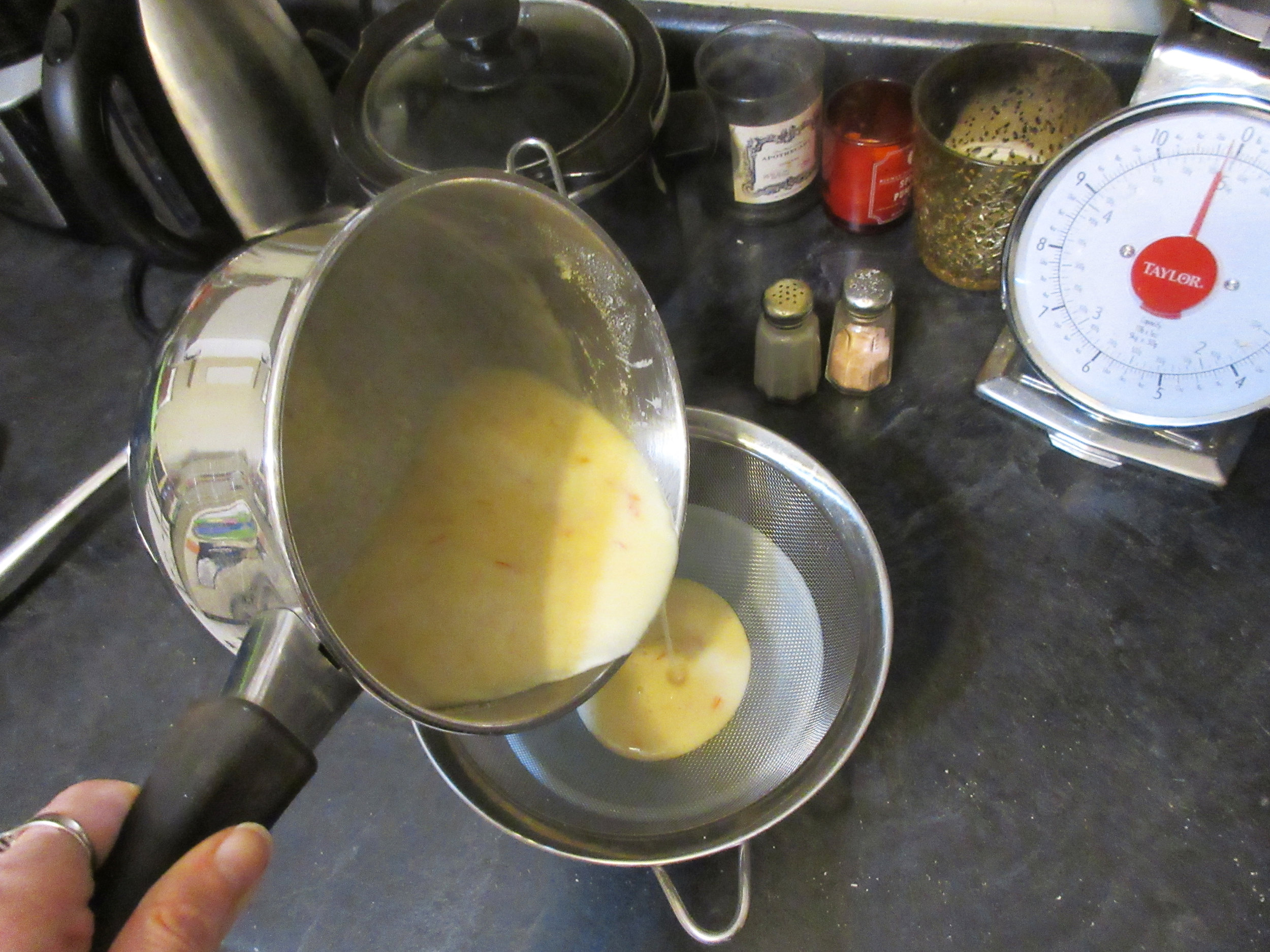Cawdel of Almaund Mylk
/You’ll find this recipe in:
The Forme of Cury
Compiled by the Master-Cooks of King Richard II
England, 1390s
Historic Recipe:
Cawdel of Almaund Mylk
Take Almaundes blaunched and drawe hem up with wyne, do þerto powdour of gyngur and sugur and colour it with Safroun. boile it and serue it forth.
My Recipe:
⅔ cup almond flour
2 cups (473 mL) white wine
1½ tsp powdered ginger
½ tsp saffron
2 tbsp white sugar
In a saucepan, slowly add the wine to the almond flour and mix well using a fork or whisk. Add the ginger, sugar and saffron. Heat until it bubbles, strain and serve.
Notes: I saved myself some work and used almond flour, but you could blenderize some almonds instead, or use a mortar and pestle if you want to be historically accurate!
The recipe doesn't what type of wine to use, but I assumed that since the recipe suggests that we colour the Cawdel with saffron, I should use white wine. I had a bottle of Vidal Chardonnay in the house, which is middle of the road when it comes to sweetness, so that's what I used.
A caudle is traditionally a thick beverage, so I ran with that idea. The ratio of 2/3 cup almond flour to 1 cup wine produced a drink that is a bit thicker than egg nog. If that's not to your taste, adjust accordingly.
The saffron in my pantry isn't fresh, probably isn't the best quality and didn't do much to colour the Cawdel. I strained it before drinking, mostly because I didn't think that having blood vein-like saffron strings in my beverage would be appealing. After I strained it, I thought that using a blender to incorporate the saffron might bring a better golden colour to the Cawdel. If you blenderize the cawdel and use almond flour, you'll be able to skip the step of straining the drink, but if you are starting with whole almonds, you'll still want to strain out the larger chunks before serving.
Cawdel of Almaund Mylk is a rather boozy and thick warm beverage that is slightly silty, made with white wine, ground almonds, sugar and ginger. This is a drink that you'll want to sip and be prepared for a strong alcohol taste, but if you are vegan and miss drinking eggnog, this is a recipe that you may want to try out!
One of the reasons why I started this blog back in March was so I had the freedom to explore recipes from different eras than the Historic House Museums where I've cooked. So far, I've made recipes from the 1740s to the 1970s, but Cawdel of Almaund Mylk is by far the most out of my Victorian comfort zone.
I've written about some of the first English-language cookbooks printed in Canada lately, so I thought I'd look into some of the first English-language cookbooks, period. I came across The Forme of Cury, which is a scroll of recipes written by the Master-Cooks of King Richard II in the 1390s. Despite what how we use the word "curry" today, this collection of recipes isn't about how to make Indian food. The word "cury" at the time meant to cook, derived from cuire, the French word with the same meaning.
What surprised me the most about reading The Forme of Cury is how many recipes used almond milk! I did some research and found out that almond milk was a favourite of the British upper class in that era because there were many days in the Christian calendar when eating dairy was forbidden.
I also did some research into what types of wine that were available at that time. I didn't find out many specifics about the grapes that were used, but that wine probably didn't taste as delicious as our wines today, wine in that era couldn't be preserved over the long term and in late 1390s Britain, the wine was likely imported from the Bordeaux region of France. In the end, I went with an Ontario wine that wasn't too sweet or dry.
If you're not familiar with what a cawdel is (today, it is spelled like caudle) it is a thick, warm liquid. A caudle could be considered a beverage, sauce, soup or pudding, and often caudles contain sugar and spices, egg yolk, bread or oats to thicken and use ale or wine as a base. Caudles were considered good for digestion and were often given to the sick to bring them back to health, so this beverage is probably the roots of the word coddle.
If you are someone who specializes in Medieval Cookery, I'd love to hear what you have to say about my attempt at making Cawdel of Almaund Mylk and I really look forward to continuing my culinary history exploration even further past the Victorian era.






